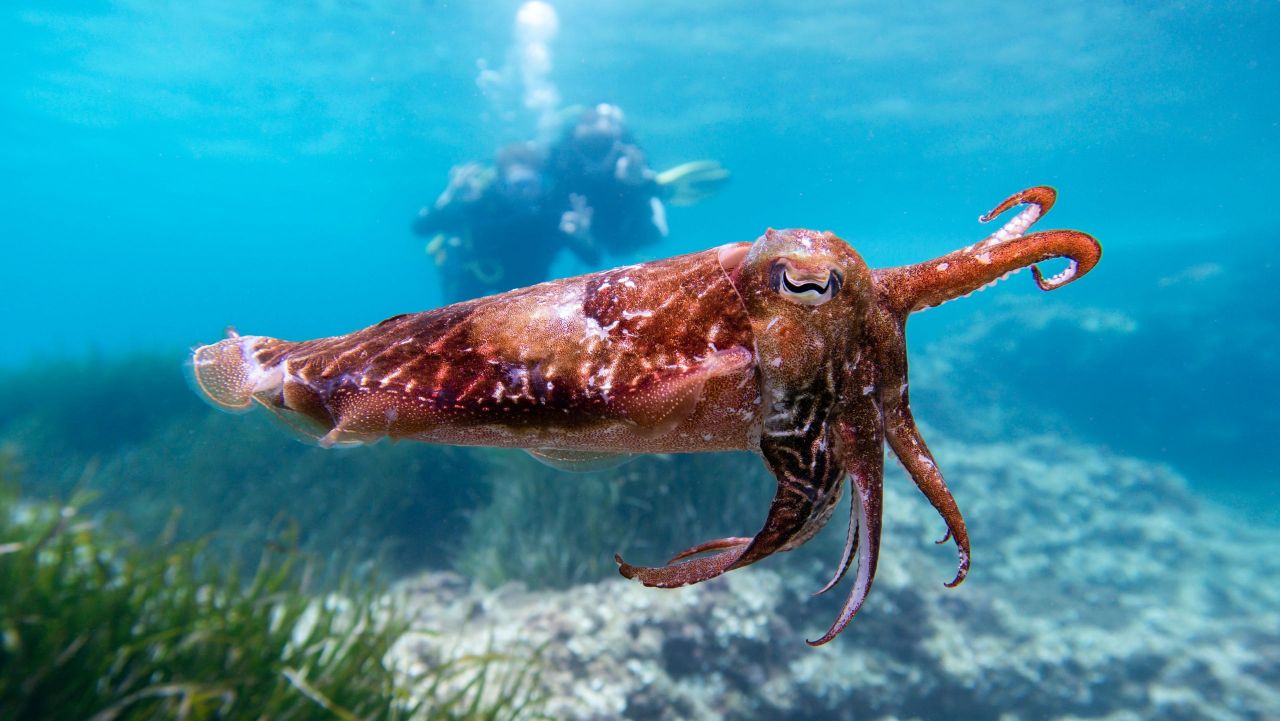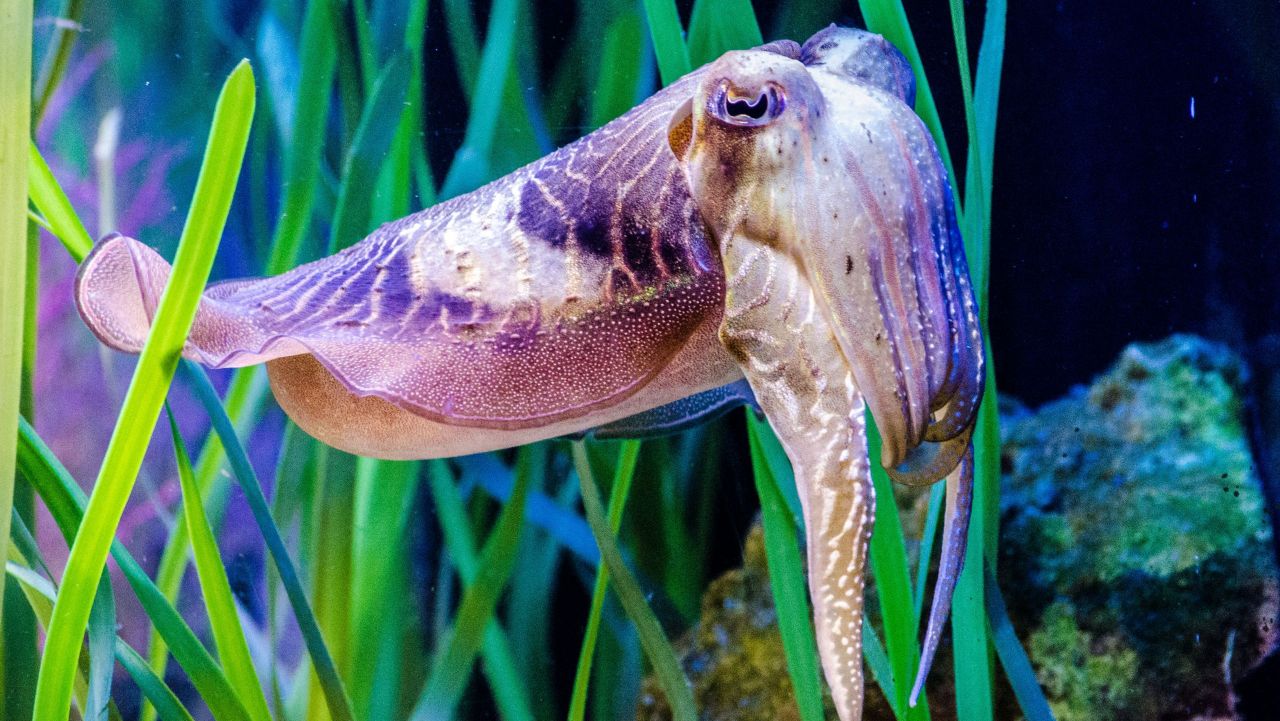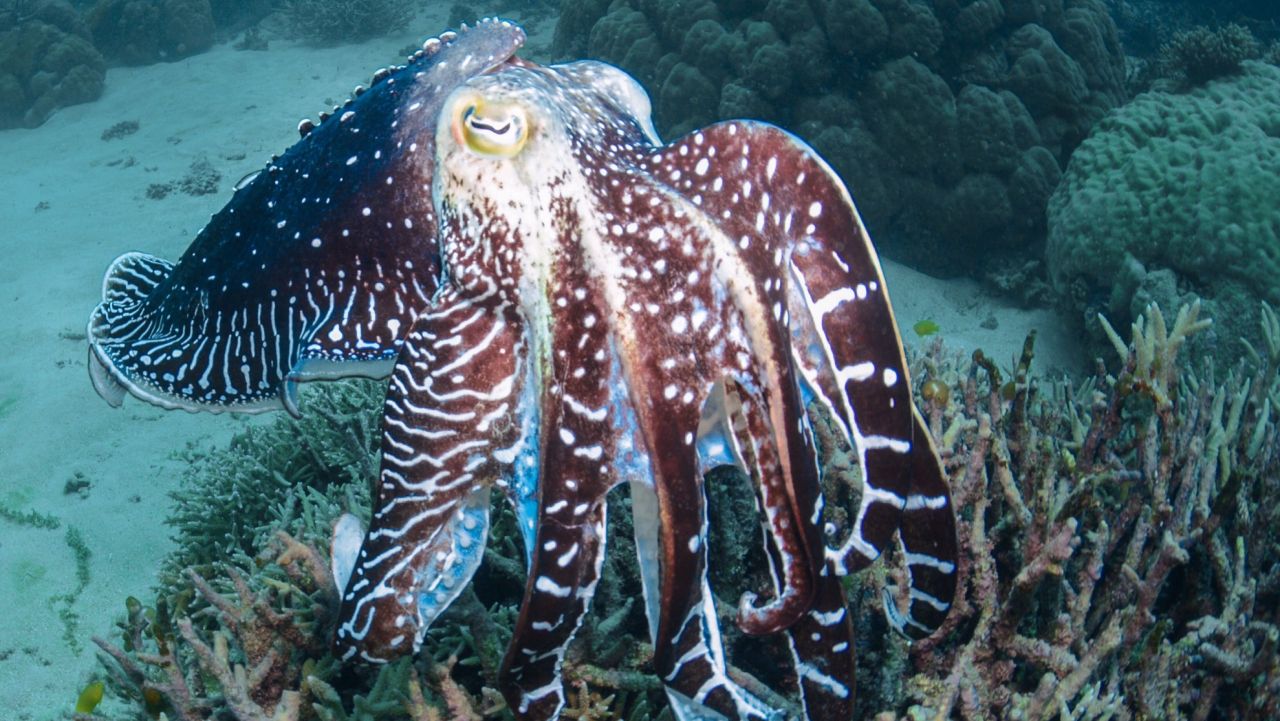Cuttlefish Fact Sheet | Blog | Nature

Cuttlefish: marine mollusks of the order Sepiida.
Kingdom: | Animalia
Phylum: | Mollusca
Class: | Cephalopoda
Order: | Sepiida
There are more than 120 species of cuttlefish. They are found in the order Sepiida and are grouped into six families divided between two suborders.

Size and Weight:
Depending on the species, cuttlefish range in length from 1.7 to 20 inches. The largest species is the giant cuttlefish (Sepia apama), which can reach 20 inches in mantle length and weigh over 23 pounds.
Appearance:
Cuttlefish have eight arms and two long tentacles attached to their head. They have large, W-shaped pupils. The mantle, the area behind their eyes containing their internal organs, is surrounded by a fringe-like fin. Like other cephalopods, cuttlefish can change the color of their skin. Their skin contains about 10 million color cells, which they can control to change their color, pattern and texture.
Cuttlefish have a unique internal shell, called the cuttlebone, that is used for control of buoyancy. By adding different amounts of liquid or gas into tiny holes within this structure, they can change their buoyancy, making them float up or down. They can also move using jet propulsion by filling their body cavities with water and then forcefully squirting it out to propel themselves backward.

Diet:
Cuttlefish are carnivores, preying on small mollusks, crabs, shrimp, fish, octopus worms and other cuttlefish. They use their extendable tentacles to grab prey, which they immobilize with a toxic bite. Their beak, located at the base of their arms, is sharp enough to break hard crab shells.
Habitat:
Cuttlefish inhabit tropical and temperate ocean waters. They are often found in shallow waters but can also be found in depths of about 2,000 feet.
Geography:
They are present along the coasts of East and South Asia, Western Europe, the Mediterranean, Africa and Australia. However, they are absent from the Americas.

Breeding:
During the mating season, males compete for the right to mate. They use camouflage and the patterns on their skin to communicate. They can change their display to that of a female or a male, depending on the circumstance. When males challenge each other, no direct contact is usually made. Males threaten each other until one of them backs down and swims away. Larger, dominant males typically are the ones to mate.
When mating, males pass a packet of sperm to the female, who stores sperm from several males in her mouth cavity until she chooses which to use for fertilization. To maximize chances of reproductive success, males can shoot water into a female’s mouth to displace other males’ sperm packets before depositing their own. When the female is ready, she finds a safe spot to lay and fertilize her eggs. Their eggs are called sea grapes because they are set in bunches and stained black by the mother’s ink. After reproduction, cuttlefish die, which is usually around two years old.
Social Structure:
Cuttlefish are generally solitary creatures. They can communicate with each other by changing the patterns on their skin. Linked to their brain, thousands of pigment cells expand and contract on their skin. They can even display two messages at once on their skin. For example, at least one male cuttlefish has been spotted simultaneously wooing a female mate by flashing courtship colors on one flank and disguising itself as a female on the other flank to trick a male rival.
Lifespan:
The lifespan of a cuttlefish is about one to two years, depending on the species.
Threats:
Pollution, overfishing and habitat destruction pose threats to cuttlefish. Ocean acidification caused by increased carbon dioxide in the atmosphere is another potential threat to all cuttlefish. Several predators hunt cuttlefish, including dolphins, seals, sharks and larger fish. To evade predators, cuttlefish have several defense mechanisms like camouflage and squirting ink.

Conservation Status:
Most species of cuttlefish are listed as of Least Concern or Data Deficient on the IUCN’s Red List of Threatened Species. However, the giant Australian cuttlefish (Sepia apama) is listed as Near Threatened.
Sources: National Geographic and NATURE’s “Spy in the Ocean.”


